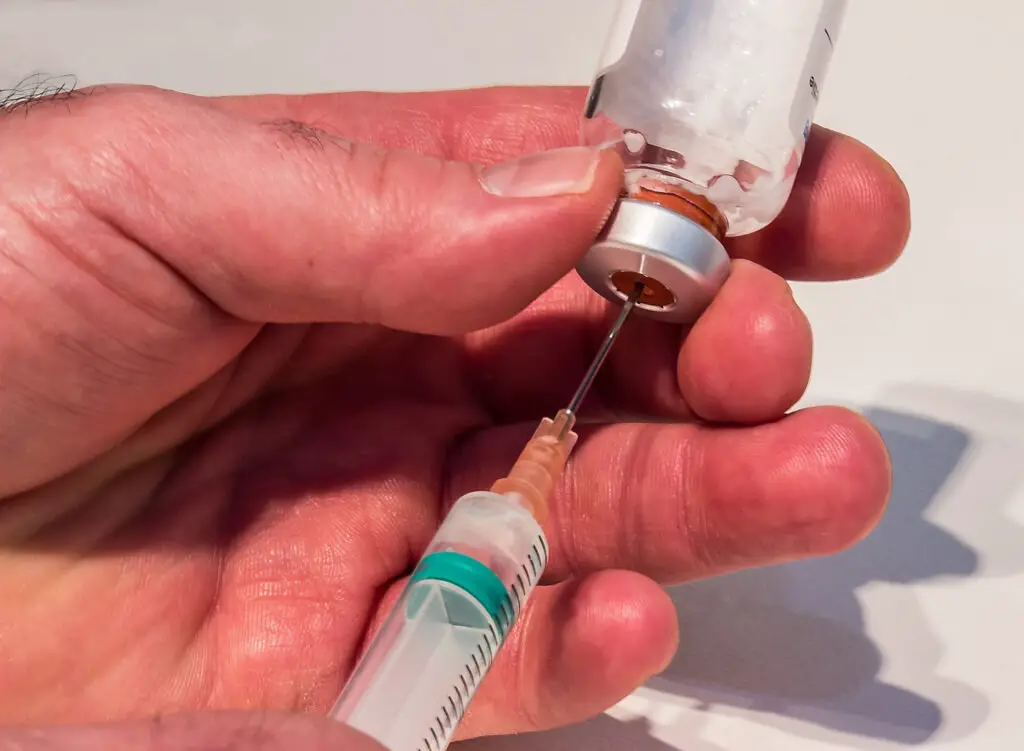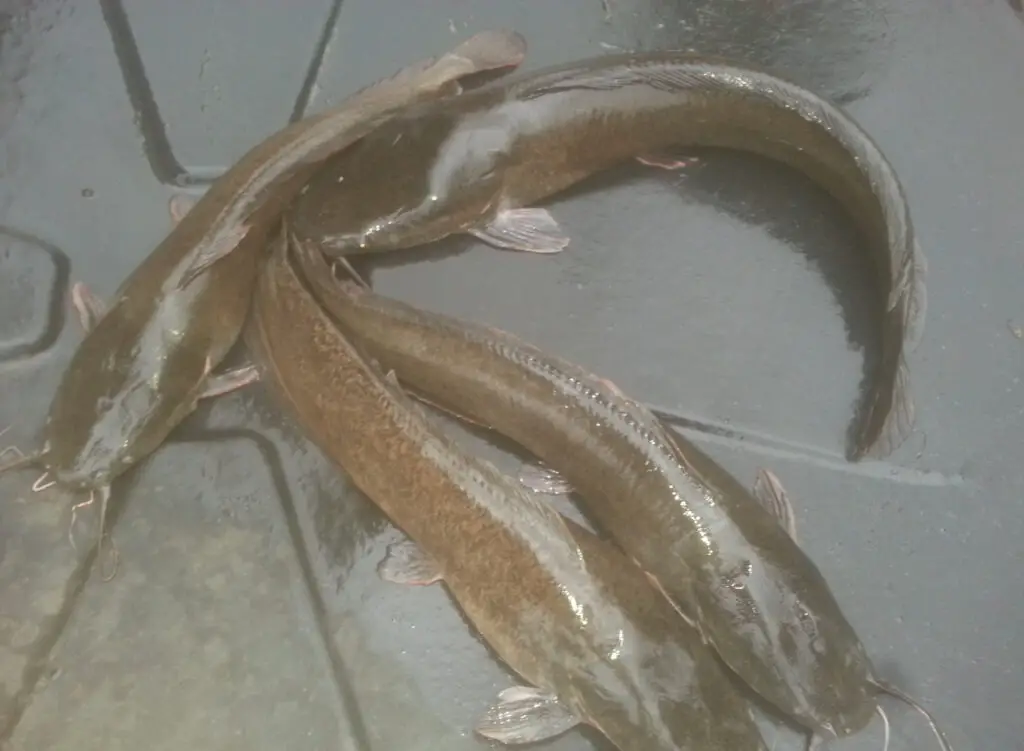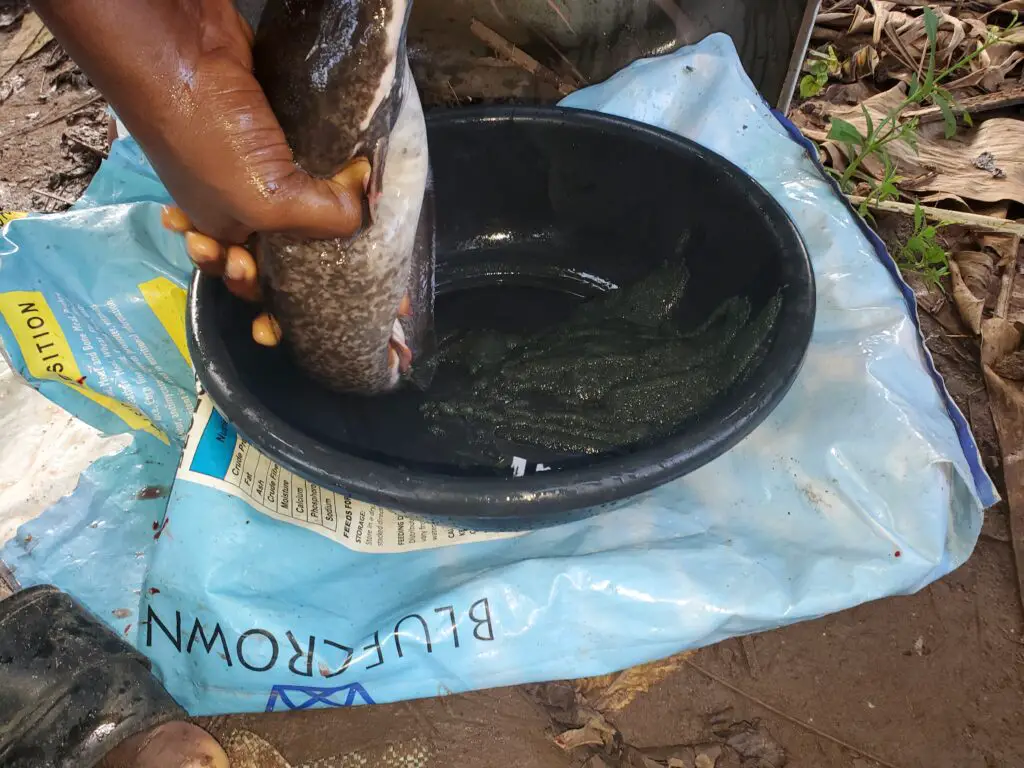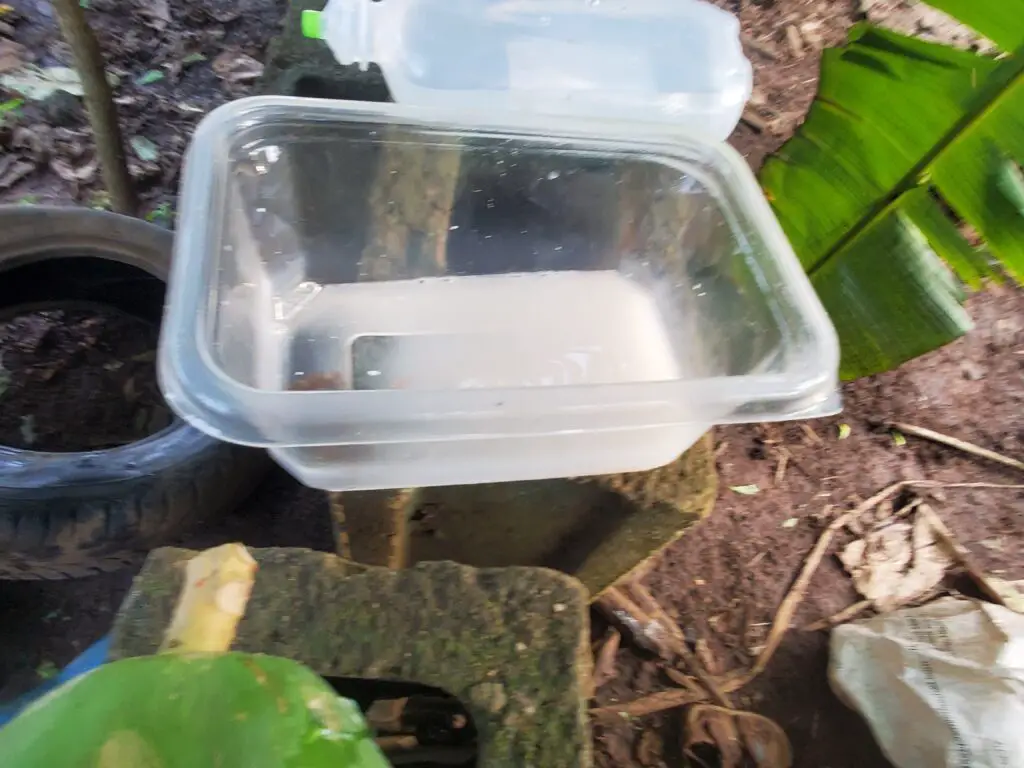Some links on this page may contain affiliate links which means that, if you choose to make a purchase using the link, Agricfy.com may earn a small commission at no extra cost to you. For more information, go to our Affiliate Disclosure Page!
One of the ways to make money from the fish farming business is to learn how to hatch catfish.
Catfish farming is one of the most common and most profitable agricultural businesses you can venture into. Beyond that, learning and mastering the basics of how to hatch catfish will help you make money from the fish farming business without sweat and within a short period of time.
This doesn’t mean that you will not make mistakes or that it will be a smooth ride for you. However, if you look beyond the mistakes and pick yourself up after falling, you will be a force to reckon with in the industry.
It is easy to hatch a fish but the management system is what puts most people off. The hatchery management process
In this article, I will put you through the process of how to hatch catfish easily in the comfort of your home.
Before we consider how to hatch catfish, let’s consider some basics of hatching catfish.
What Is Fish Hatchery?
Catfish hatchery is the process of artificially breeding a fish. In other words, you hatch the fish’s eggs under artificial conditions.
The process of hatchery (which is mainly insemination) takes around 24 to 36 hours before the proper management system begins.
Now let’s take a look at the hatching process.
You’ll need to have some equipment to hatch catfish successfully.
Hence, let’s consider what some of these pieces of equipment are.
Catfish Hatchery Equipment

There are certain pieces of equipment you need to have before hatchery can take place. These pieces of equipment include:
- Incubator
- Well regulated Water
- Broodstock
- Scale
- Synthetic hormone
- Syringe
- Saline Solution
- Spawning Net
- Bowl
- 2 Towels
- Tissue Paper
- Plastic spoon
- Blade
Steps To How To Hatch Catfish
1. Identify The Broodstock

The first step in the hatchery process is identifying the broodstock.
What is a broodstock? Broodstocks are mature catfish that can be used to hatch catfish. Simply put, they are male and female catfish.
What you need to hatch a catfish egg is the female catfish and the male catfish. To identify the broodstock is easy, turn the catfish upside down.
The male broodstock has a red-tip sexual papilla located behind the anus.
The female broodstock has a reddish genital opening. Also, it has a swollen stomach that can be easily identified. If gently pressed from the top, the ready eggs will come out.
2. Select The Catfish To Be Used
The next thing you need to do if you want to hatch a catfish is to select the fish(es) you want to use for hatching. Before deciding on the fish to use, you must have selected and scanned through several catfish to see which is right and ready to use.
Make sure the fish selected is mature because it has a direct effect on whether or not the process will be successful.
3. Weigh The Broodstocks
Next, you need to weigh the fish to see if they are up to the required size. Personally, when selecting the fish I want to use to hatch, I prefer the female fish to be at least 1kg. This is because they will be “loaded” in the local language i.e. they will contain more mature eggs.
4. Prepare The Female Broodstock For Propagation
After selecting the fish (male and female) you want to use, the next thing is to prepare your female broodstock for propagation.
In this stage, you will inject the female fish with the synthetic hormone (Ovaprim, or Ovulin). The amount of synthetic hormone you inject into the fish will depend on the weight of the fish.
To inject the fish, you must first cover the face of the fish with a towel. After covering the face, point your syringe towards the tail of the fish and inject. This way, the synthetic hormone will be effective and produce desired results.
5. Separate The Catfish
After injecting the fish, you have to separate the male fish from the female fish. This is important because after like 4 hours, the female fish will start reacting to the injection. When separating the fish, you have to cover the fish so it doesn’t see light at all.
If you don’t do this, the fish can fight her way out of the space you put it. You have to separate and cover the fish for at least 8 hours.
Read this article on how to start a fish farm
6. Set Up The incubator
The next step in this process is to prepare the incubator where you will be hatching the fish. Ideally, the place should be ready at least 14 hours before the previous process. If your water pH is not good, you have to fetch the water down for 24 hours or more to allow the acidity level to reduce and for a hassle-free hatchery process.
Have your water down and spread the spawning net on the water then you are half ready to hatch your fish.
7. Strip The Fish

After like 8 hours of injecting your fish, now is the time to strip your female fish. This process is very delicate because you don’t want your effort to go to waste.
The first thing after you remove your separated fish from the water is to cover the eyes with one towel, then another person holds the fishtail with a towel also. Whoever is holding the fish has to hold it tight so it doesn’t fall off.
After covering the eyes, gently press the belly of the fish till the eggs start coming out. Continue pressing the fish belly till you see that there are no more eggs or you can see that a stain of blood has started coming out.
8. Bring Out Milt

The next step is to remove the milt sac (sperm) from the male fish. There are different ways to do this, some people kill the fish first and then bring out the milt sac.
What I do is I cut the fish from the belly and then bring out the milk sac from the side. Although you are going to kill the fish eventually at least you can do whatever you want to do before the actual slaughter of the male fish.
A male fish should have at least two milt sacs but if that doesn’t happen, one should be enough depending on the size and weight of the female broodstock.
When you remove the milt sac, put it on tissue paper and cover it. You can remove the milt sac before or after killing the male fish, whatever works for you is fine.
NOTE: It is advisable to have at least two or three male broodstock on standby. This is because you might be in a situation where one male broodstock doesn’t have any milt sac. I have been in that situation before.
9. Mix The Saline Solution With The Milt

After removing the milt sac from the broodstock, the next thing is to mix the milt sac (sperm) with the stripped eggs. Get the eggs, gently cut the milt sac with a blade, and mix both with a spoon using the saline solution.
When mixing the eggs, you have to be very careful so that there is not too much saline solution or water (if you are going to be using freshwater).
Mix for at least a minute or more before moving to the next step.
10. Spread The Eggs On The Spawning Net
The last but not least step is to spread the eggs on a spawning net.
After gently spreading the eggs, cover the pond with thick nylon for at least 24 hours.
How Long Does it Take For Catfish Eggs to Hatch
Come back after 24 hours to check whether or not the eggs have hatched.
At times it takes longer than 24 hours for the eggs to hatch but it should not be more than 30 hours in order to avoid pollution
How do I know if the eggs hatched?
The hatched eggs fall from the net down to the bottom of the incubator (plastic pond or whatever you use to hatch) while the bad eggs turn white and stay on the net.
You can leave the net for like 30 hours but you need to check it regularly to avoid pollution.
If the net is not removed on time and the water is polluted, it can cause the hatched eggs to die.
Some people do not see the hatched fish early, it is normal. Such people can see the fish at 72 hours when most of them would have been swimming in the water.
NOTE: The male fish you use for hatching cannot be used again cos the most important thing useful in the fish has been removed.
The female fish used for spawning should be kept separately from other broodstock and fed very well. After 4 months, it will be ready for use again.
Best Weather Condition For Hatching Catfish
if you are in Africa, there are basically two different weather conditions we operate in, the rainy season and the dry season (just like winter and summer in Europe).
One question that has been common for newbies in the hatching business is what is the best weather condition for hatching?
There is no perfect weather condition for hatching catfish fries.
The only thing I will say is there is a way to manage your fries in different weather conditions (be it rainy or dry season). Although, there are farmers that will tell you they can’t hatch fish in the rainy season which is understandable.
As I always say to my students, fish management is always a tricky one. Too much cold affects the ovulation period of the female fish and when the eggs are hatched, if exposed to much cold, it can freeze them to death.
Likewise, heat, when you try to hatch catfish in a dry season and in a place that brings too much heat, if not careful, the heat will burn your fish to death.
What will be my advice? I will say depending on the season you find yourself as a farmer, learn how to work with that season in order to be able to produce great results.
Conclusion
The process of insemination to hatch catfish fries is very easy and it takes approximately 24 – 36 hours to complete which anyone can do. However, the real work begins when you have successfully hatched your fish, and it’s time to manage them for proper growth.
The first 2 weeks after the hatchery process is very crucial to the survival of your fish. You need to treat the catfish fries carefully, when changing the water, feeding them, siphoning the pond, and even when you need to sort them.
This process is not easy and requires special attention.
With less than $70 (N 30,000), you should be able to hatch a catfish successfully.
This is excluding some one-off costs you’re going to incur in setting up your hatchery.
If you are lucky and you were able to manage the fish for 2 weeks well, you can sell the fish and make money.
Do you find value in this article, do well to share it with your friends.
If you want more guidance on how to hatch catfish fingerlings at home, you can send us a message using the Contact Us form.




When you say mix the egg with the milt and later you said cut the milt with a blade and stir, which one comes first?
You will cut the milt first before you mix it with egg
Very good explanation, but I don’t know the name of what you are injecting inside the fish. Can one use mosquitoes net? If yes, can it be turching the water or will it be very high above the water? Thanks.
The name of the injection was mentioned in the article. Read again without rushing you will see it there.
It is better you use the right net.
Yes
Can you people contact me for more guide
Can I get your contact or can you contact me via WhatsApp 08130520549
Kindly send me an email to daniel@agricfy.com.
When sending an email, kindly let me know how I may be of help
Please can I kill and cut the fish before removing the milt sac
Yes, you can kill the fish before removing the milt sac
Thanks for sharing and I trust I will find success as I demonstrate it myself.
Please what’s the function of the saline solution in this process. Thanks
It helps with the fertility of the milt sac. It keeps the sperm alive when mixing with the eggs.
How can i make the male and the female catfish mate
They don’t mate naturally, they do that through artificial insemination
Thanks for this lesson. Quite useful. I will try it and reach you with my success story.
I should appreciate it very much if you give me tips on the management after hatching.
I will be waiting to hear your success stories. Cheers
Hmmmm! Is not as easy as you just read dont be deceive, alot of challenges in it. Go and learn it properly before venture into it
Yes, I mentioned it in the article, it’s not as easy as it is in the article. it requires experience and patience
hello abd how are
my question here is , i hatched by following all the steps you mentioned but after 5 days still the eggs didnt hatch still on ground didnt start floting pls what is the problem thanks
Alhaji Gambo Inuwa.
You might have done something not right during the process that’s why. In 24 hours you would have known if the fish is hatched or not. You can send me an email at daniel@agricfy.com
Thanks have learnt something from u…..
Great to know the article helped and learnt something from it.
Pls where can someone get (ovaprim, or ovulin)
You can get it from any store that sells fishing equipment in your area
Good morning.
Please is it possible to get a practical training from you, on how to hatch catfish?
I will be grateful if I get urgent response.
Thanks.
Yes, it’s possible
Pls,any specific weight of the male brood stock
*what acidity level is best for the fertilized eggs
*average duration of hatched eggs
*owing to the number of expressed eggs,can one use milt from 2 male brood stocks
*what volume of saline water is recommended to mix
– No specific weight actually so far the eggs in the broodstock is mature enough to be used.
– Let your water pH level be within 6.5 – 7.5
– Within 24 hours you will know whether or not your eggs is hatched
– Yes you can
– Use your discretion
Pls, what about if the pH level falls below the range, what next to do to raise it to normal range and how can you know the pH of your water in pond.
Get a pH meter to check your water pH. You can watch this video on ways to treat your water pH – https://www.youtube.com/watch?v=22IKz7kjAgY
nwakwuokejohn80@gmail.com
Thanks for your sound Lecture.
Out of search for more knowledge in hatching of catfish and it’s management, I was very lucky to stumble into your article.
My cousin hatched for me yesterday.
It was a success though the eggs pressed out were very small.
When the fish died after 14 hours of doing the hatching, I discovered the eggs in the sac were very much while few came out during the pressing.
My Question:
(1) What is the ml of the Ovulin for a particular kg of fish.
(2) kindly educate me on step by step approaches of management of my hatched fishes.
They started showing sign of been hatched from 2pm today.
Thanks so much Sir.
Nwakwuoke John D.
– The quantity is always written on the bottle of synthetic hormone
– Hatchery management cannot just be explained by mouth cos that’s what is called fish hatching. Where the real work is. If you want to learn more and succeed then go for more training particularly on fries management.
(1)What is the ml to inject for a particular kg of female fish ?
(2) Educate me pls on the step by step management of the hatched fishes.
Regards
Nwakwuoke John D.
Great article. Learnt the theories and willing to put it up for practical experience soon.
Thanks for the piece sir. Please, I want to ask, what’s the aormal age of a female brookstock and that of male to be used for the process? Is there any particular age for a male brookstock or so far it produced matured Milt, it can be used?
From 8 months and above for both male and female
How can one get training from you and where can we locate you
There are different ways depending on your location. You can either come to the farm for training or you can invite me over if you have a farm.
I am in Lagos
You can also watch my videos on Youtube – https://youtube.com/OlagunjuDaniel.
My fish is just 6months but I have almost 2kg of fish already,
My question now is can I still use them for hatching since they are not up to 8months yet…?
No, you can’t use it for hatching. The age of the broodstock that you can use has been stated in the article.
it’s not about the weight but the age.
Type here..Thanks so much for this well explained educative article…
Question
what is the level of temperature favorable for hatching. thanks
Thank you for the explicit information you shared with us.
Will the male catfish be injected too
No. You only inject female fish. It was explained in the article and shown in the video
Very good explanation. Can i have your contact
Send an email to daniel@agricfy.com
What is the best weather to hatch fish , hope cold weather can not affect our hatching sir thanks
After hatching how do you feed them at that early stage
Type here..Thanks for this articly please i want to start this catfish business.how do i start?
Please can I av ur what’s contact
+2348166416803
Good day sir Am a new catfish farmer from Ghana, was wondering after the eggs are hatched should I feed it straight after the eggs hatch or I should wait?
You should feed them 3 days after hatching
[…] people begin by hatching because it is the least expensive method. According to data, you can begin hatching with as little […]
[…] people begin by hatching because it is the least expensive method. According to data, you can begin hatching with as little […]
Type here.. Thank you for your advice i can now hatch my catfish well as i learn thank abandantly.
Thanks for this article. I have been looking for such for long.
I have tried this. It hatched many but all died after 12 hours. What must be the cause/s
I also saw some small worm-like organisms there. What are they?
It might be:
i. Pollution
ii. Poor water
iii. Poor management
Thanks very much for your clue, tonight am hatching I pray for success .
so interested and educative
Thanks for this piece
I want to hatch tonight, please can you help me on how to prepare saline solution with our local salt?
i can hatch successfully but can not raise them to fingerlings
Well, that’s where fries management comes in. I said in the article, the hatching process is just 24-48 hours but you see the real deal is the management which is from 48 hours – 4 weeks.
So interesting
Is it only catfish in Africa that is down this method , what about the other fish like scombia an shawa can can the generate it ?
Very educative
Nice one sir, please what is the dose of the hormone u injected the female fish and weight for a particular dose
Thanks for your pieces of lecture. I wish to know if we need to run a flow throw after 24-30 hours of hatching in a trampoline vat to avoid pollution.
Thanks for the teaching, I will contact again once I’m ready to carry on the process
Thanks you for reward you abundantly
Very impressive with so much understanding
Thanks
I am having a very serious problem with my hatchery.
The problem is the fish use to die the day they will complete a week, and I don’t have water issue I set my tank propery I make sure the water is clean. Yet I am experiencing this ..
At this point I’m deeply confused .
Thank you for this article. Pls,I’m presently constructing a circular concrete incubator/nursery.My guide instructed us to construct it at the dept of 3feet.After doing so,another person told me that it is too deep.That there won’t be enough oxygen and that the dirt can not be removed.0ls,what is the maximum dept of a circular concrete incubator?
For a nursery pond, it should not be more 2ft in depth.
God richly bless you for this.
can the female fish be eaten immediately after this process?
Wow, thanks for these article, I have learnt a lot today no knowledge is a waste…I really love these..
Well done sir, pls after mixing the saline solution with catfish Egg, can we filter it?
Wow. This is superb sir your article is really good and I’m glad to have come across this. It has really helped me through what I’m currently studying in the university right thanks a lot. Please I took your contact from the comments section to reach out to you. Hope it not a problem sir🙏
Which method is best for hatching sir considering success rate. Flow through or Recycling
It’s not about the method but the management of the fish
What kills the fry when they have been fed well, temperatures monitored , pH monitored and water changed
There are different things that could happen. At what day or weeks do they start dying?
Thank you sir for the guiding steps. I believe it will help us that are new in the system. God bless you sir.
Please sir as a beginner, must I get d broodstock or fries to start with.
If you want to hatch yourself, then you will buy broodstock
Hello Sir ,good day I love your article, very educating. I wish to know how to inject the catfish, the syringe will stay within the fish skin or it should pass and go inside the belly of the fish?
I’m happy the article was educating. Kindly watch the video in the article it was shown how to inject.
Please sir, after laying the eggs on net did I need to do flow through system before the fish should hatch?
It’s not compulsory. It depends if you have a good water system
It was mentioned in the article